Perfect Storm: The NuCoal Field Guide… Reviewed!
November 21, 2011 by beerogre
That’s right, Perfect Storm is the brand new Field Guide for the newest faction to explode into the Heavy Gear universe!
NuCoal (the handy name for the New Coalition) is an emerging league, formed from a pragmatic group of independent Badlands city-states. The NuCoal have joined together for mutual defence and economic strength.
According to the book, the NuCoal Self Defence Force (or NSDF), NuCoal’s military wing, is smaller than other Terra Novan forces. However, they have significant military technology, seemingly begged, borrowed, bought or stolen from Port Arthur and Humanist engineering.
While the NSDF forces are the primary content of the book, they’re not the only army list it contains.
The faction I’m most interested in is Port Arthur Korps , one of the city-states that makes up NuCoal and is composed of former invaders from Earth… I like them primarily as Earth is seen as the villains of the Heavy Gear universe… which means they undoubtedly get the best costumes and lines!
That and I’ll paint their Gears in elegant, slimming black!
The other faction is the Humanist Alliance Protectorate Force, which is a Southern military outfit who are allied with NuCoal. It seems that the Humanist Alliance has (or at least claims to have) the most advanced technology currently available on Terra Nova which, when combined with Earth’s already considerable technical advancements, makes the new Gallic series of Gears and vehicles some of the best available.
Just on that… a collaboration by engineers from NuCoal, Humanist Alliance and Port Arthur. The “Gallic Series” is the name of the project that developed the new vehicles and Gears… pretty cool eh?
If that’s whet your appetite, you’ll be pleased to know that Perfect Storm contains 17 brand spanking new models, many of which can be used in existing forces.
One of the really cool features of the NuCoal Field Guide is the new squad construction rules, which centre on the different weapon load-out of the various Gears, each of which has its own designation for easy battlefield identification and modelling… but more on that when we take a look at some of the new Gears!
The Field Guide also contains an in-depth background and all the up-to-date information on the NuCoal, its history, a compendium of the available Gears and vehicles, as-well-as all the artwork you’ve come to expect from a Heavy Gear book. I’ll not spoil the book too much, but if you ever wanted to field special characters and even create your own unique ace (or indeed a Duellist) to pilot your favourite Gear… then you can’t afford to miss this book.
While the rules for Aces & Duellists may say they’re optional, for us there’s no optional about it… my Duellist’s Gear will have a custom paint job… a pretty pink one!
Speaking of paint schemes... there's a great painting section in the book with helpful tips on painting your Gears. It's all very cool and great for a player who is just picking up this faction for the first time. If you're an old-school Heavy Gear player, then you might want to pay particular attention to the new organisation charts and the Gear descriptors. I have it on good authority that this is the way the new Field Guides are going to be laid out in the future.
For me as someone reasonably new to Blitz, it makes much more sense to upgrade my Chasseur to a Chasseur Gunner for X amount of points, than worry about which gun does what... and how many I can have... I'm sure there will be some dissent from the pessimistic members of the Old Guard, but for we newbies it makes things a lot easier to grasp.
Overall, the book is well laid out, easy to follow and has some catchy tales to kick the imagination into action. On the downside, there are a lot of acronyms in the book, weapon names are all shortened to letter codes (for example LAC is Light Autocannon).
My advice to any new player would be to keep a finger in page 119 when checking out the Gear & Vehicle data cards or the variant lists, you'll need to refer to it often... but not too often... once you get used to the codes.

































![TerrainFest 2024! Build Terrain With OnTableTop & Win A £300 Prize [Extended!]](https://images.beastsofwar.com/2024/10/TerrainFEST-2024-Social-Media-Post-Square-225-127.jpg)







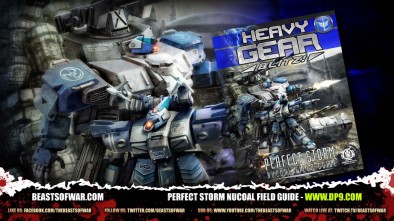
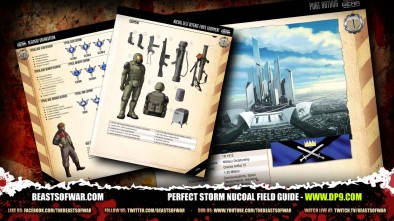

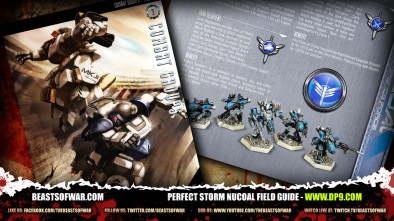
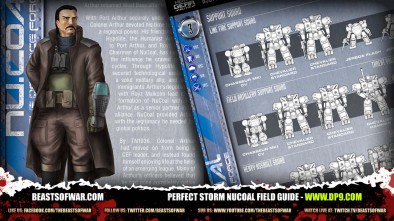
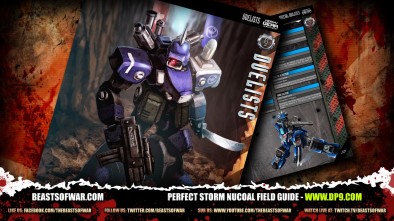



































What you mean is that it will be setup like the old Army Lists of the Tactical Period thus you might need to replace “If you’re an old-school Heavy Gear player” with “If you’re an NEW-school Blitz era Heavy Gear player” and unit upgrades for X points have been a staple of blitz play since the inception of Blitz.
@scaramanga … If you check out the model spotlights, you’ll see what I mean.
Instead of saying a Chasseur can exchange its Light Autocannon for a Medium Autocannon or a Light Rifle for X points (for example).
You now upgrade a Chasseur to a Chasseur Gunner who gets a Medium Autocannon for X points… the upgrades are determined by the new descriptor, you can’t mix & match weapons.
That’s actually exactly like the Tactical Period, before blitz, which is what scaramanga is talking about. In Tac, you have a Hunter, costs 380 TV. But for XXX TV instead you can buy an assault hunter, with a different set loadout. No mix and match really (Though if you dig into the RPG books you could do as you please, if you’re adept at math). In Blitz! it became where LAC -> MAC +5 points, but only so many, etc etc with possibly confusing phrasing, and you could choose which to take or not to take with options. That’s all… Read more »
It’s actually going to be a hybrid of the old Tact layout and Blitz options listings.
We are confident that newcomers will find it easy to use, and old guard players will enjoy the familiarity of the Tact era combat group layouts.
this book is on my list along with the whole army. Can’t wait to get them all.
NuCoal seems to be pretty intresting faction.
I just hope I can pull off using recon groups as core…jerboas…